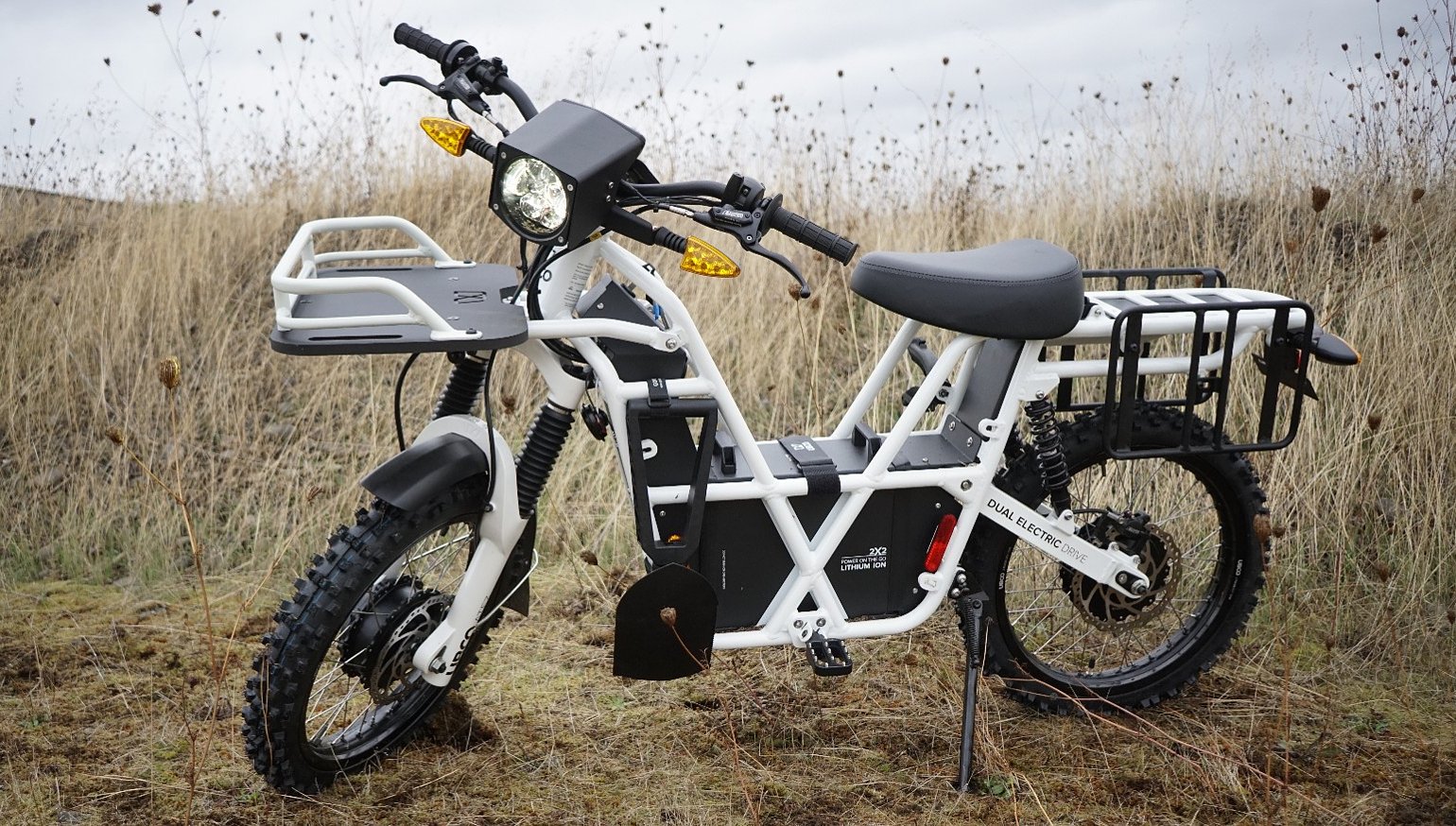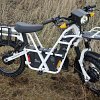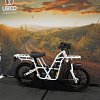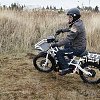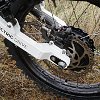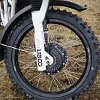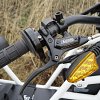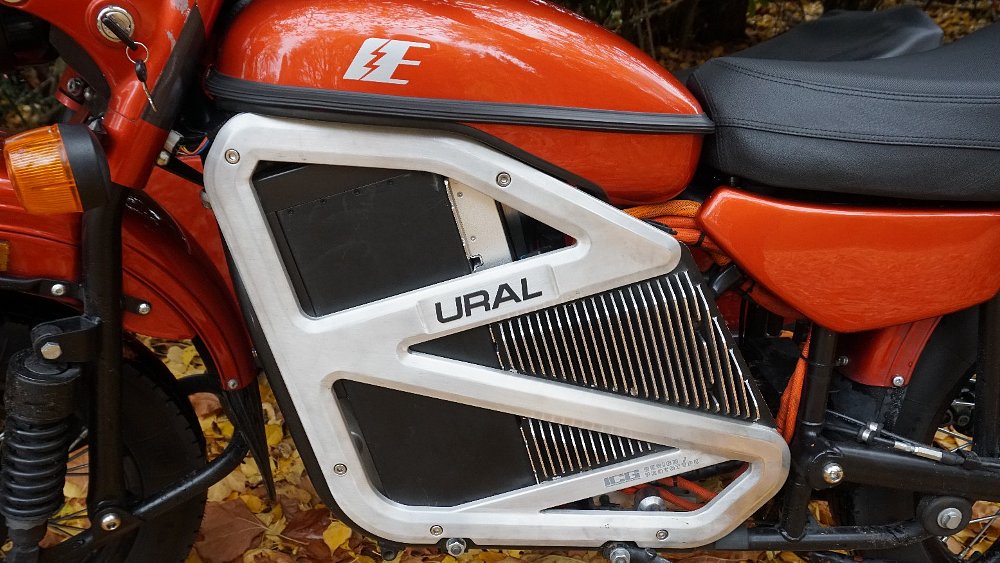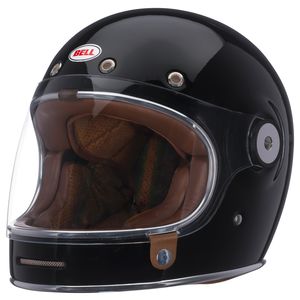One of the bikes that caught my eye at the AIMExpo was an electric vehicle with such a unique, utilitarian look that it was almost impossible to categorize. There were two or three Ubco 2x2s on the stand, configured in ways that illustrated a modular approach to design; it’s less a motorcycle than a two-wheeled platform that users can configure as they wish.
Of course we’ve seen ambitious electric motorcycle companies fail. Alta Motors recently shut its doors after making impressive headway towards the goal of producing a really competitive electric motocrosser. Before that, Brammo failed while producing a street bike positioned head-to-head with ICE commuter bikes. And before that, Mission Motors talked the talk but couldn’t walk the electric superbike walk.
Regular readers will know that I believe electric disruption will come up from the bottom of the market. That’s where the Ubco 2x2 will live; it only weighs 140 pounds and has a top speed of 30 miles an hour. In its native habitat — New Zealand — it’s sold as utilitarian transportation for farmers, and the new U.S. distributor just signed up a chain of John Deere dealerships to sell it across the American south.

Is it even a motorcycle? The feds would say yes, but in most states the strictly legal answer is, “Not quite.” Ubco does have to meet a minimal set of DOT standards for braking performance, headlight and taillight, reflectors, etc. Because it’s restricted to a top speed of 30 miles an hour, the 2x2 usually falls into the the same category as sub-50 cc mopeds.
So it’s an unambitious vehicle. But as a low-performance, low-stress, off-road vehicle for farmers or hunters, as an urban grocery-getter, or hung from the bumper of an RV, it offers a versatility and ease-of-use reminiscent of the old Honda CT90.

From contest entry to startup

It’s nothing if not innovative. The frame’s a welded aluminum trellis that is designed both for strength and modularity. There are 17 anchor points and lugs allowing users to configure a large front shelf, a rear shelf or pannier-racks, gun racks, and all manner of whatnot.

The 48Ah-rated, 50V lithium-ion portable power pack can be swapped out in moments. The system uses an outboard charger, so it would be practical (but expensive) for users to run one battery while charging a second. (The Ubco U.S. web site is currently advertising a promotion, good through the end of the year, offering a second battery free to the first 15 buyers.) Most users only have one battery, limiting range to about 75 miles. It will recharge fully in six to eight hours. The bike includes two USB ports and one 12-volt/10 amp port for heavy-duty lighting or 12-volt power tools.
The brakes are Tektro Dorado hydraulic disc units developed for bicycles. The fork was engineered specifically for Ubco; I’m not sure about the rear shocks. The fork has slightly more than five inches of travel, the rear a bit less.

This is where things get interesting: The Ubco 2x2 rolls on two identical wheel assemblies. The narrow alloy rims come standard with 2.75x17 Kenda 667 tires in the good old "trials universal" pattern (again, like the tires that used to come on a CT90). Each hub contains a proprietary one-kilowatt peak brushless DC "Flux Drive" motor. Each motor has its own controller, so in the unlikely event of a motor failure, a user could just disconnect the power to one wheel and limp home on the other motor.

Ubco comes to the United States

Oops, sorry. The sprawling campus I visited was actually the University of Oregon, which Ethan and I rode through on the way to lunch. Ubco’s U.S. headquarters is a single bay in a non-descript mixed-use building, in a bleak industrial neighborhood that was probably re-developed on the site of a disused lumber mill.
At the time I visited, the bay was almost full of crated Ubco 2x2s, brought in ahead of expected trade tariffs. Ubco U.S. has a lot more inventory on hand than I expect to see at any start-up, so Ralston’s got his work — signing up dealers and getting bikes out onto showroom floors — cut out.
This isn’t his first rodeo. Ethan (who was born in Eugene and studied business and marketing at the University of Oregon) was previously a CEO in the red-hot IoT (“internet of things”) space. He ran a company with his father, who is a brainiac electrical engineer. That business was acquired by Novatel a few years ago in a deal that left the father-son team with time and money on their hands.
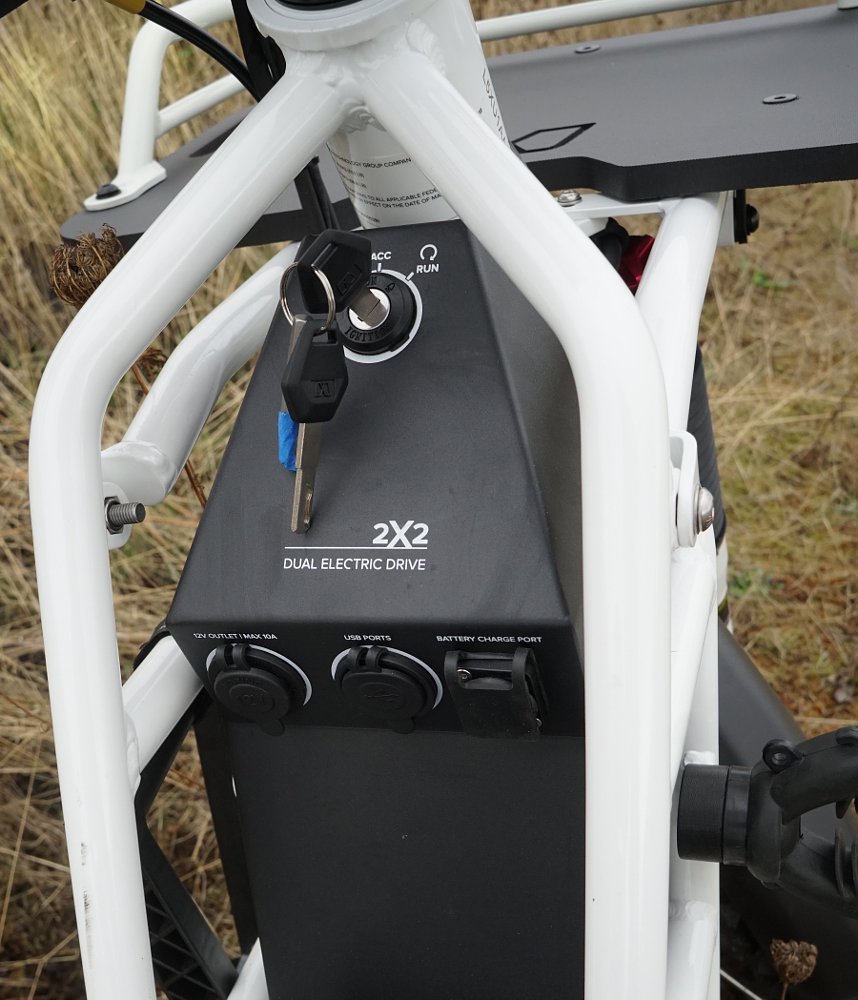
The Ralstons considered developing an EV from scratch. But while they were doing their due diligence, they came upon Ubco; the New Zealand start-up had already sold its quirky electric trail bikes in New Zealand and Australia. The Ralstons were impressed with the design, and perhaps even more so with Ubco’s Chinese manufacturing setup. Rather than build their own EV, the Eugenians signed on as U.S. distributors in 2017.
Full disclosure: I had a tight schedule in Eugene, so my riding impressions are based on one short street ride, through Eugene to a lunch spot where I interviewed Ethan, and then a second short "dirt" ride, in a large vacant lot where someone had dumped a hundred truckloads of fill.
The step-through design and low seat height make the 2x2 feel more like a scooter than a motorcycle. As soon as you’re on it, the impression’s one of light weight carried exceptionally low. It has pretty stout, moto-style footpegs but there are no foot controls. Like most EVs, it is a straight twist-and-go proposition. The brake setup is like a scooter: right lever front, left lever rear.

I was slightly taken aback when I rocked it upright to feel its weight, and the sidestand snapped up all by itself. Ralston told me that there was a DOT rule that, since it didn’t have a sidestand interrupter switch, it had to have an auto-retracting kickstand. Then, as I followed him out of the warehouse, I was genuinely taken aback when the first time I hit the brakes and closed the throttle, the bike stopped and momentarily powered backwards a few inches all by itself. He apologized and told me that they must not have updated the firmware on that particular one.
Once we were underway, the whole thing felt a little unstable — the way a conventional scooter feels operating on small wheels, if you’re used to a full-sized motorcycle — but I quickly adapted to it. The total of two kW on tap only equates to a tad less than three horsepower, though like all EVs, the Ubco delivers torque in a way that makes it feel more powerful than it really is, especially at slower speeds.

On surface streets, the Ubco can easily stay out of the way of a normal car driver. It reaches 20 mph about as fast as the average 50 cc two-stroke scooter. But as it approaches 30 mph, an electronic governor takes over. It was definitely not a problem in Eugene’s traffic, or crossing the UO campus, but Ralston knows that in most places, even a non-freeway commute demands a top speed more like 45 mph. There might be some future Ubco with that capability, but it will limit the market to people with a motorcycle endorsement, and a whole bunch of components that are perfectly adequate below 30, like the brakes and suspension, would probably need to be upgraded.
I wondered whether I would feel the two-wheel drive on the street, but even on wet pavement, slick with fallen leaves, I’m not sure I ever noticed it. I ended my short street ride convinced that, just as it is, the Ubco would make a good little grocery-getter or pizza-delivery vehicle in dense urban settings where traffic never gets over 30, or in calm suburbs where sticking to the speed limit doesn’t trigger road rage in the SUV crowd. It would be great for students moving around a big campus, or even in factory settings where it could go from outdoors to indoors without undue noise or carbon monoxide.

After lunch I tried a bike equipped with knobbier tires for quick ride around a muddy field. The Ubco is not only low to the ground, but it’s also got a wheelbase about six inches shorter than most small trail bikes (e.g. Honda CRF150F). As a result, it felt more natural for me to ride it sitting down than standing on the pegs. In that mode, which in fairness is the way most of its intended users probably ride, it worked really well on loose surfaces.

Obviously, with only five inches of softly sprung suspension travel available, you’d have to find a way to stand on the pegs comfortably if you planned to ride at all aggressively. For me, that might be as simple as raising the handlebar a few inches.
When I tried running the 2x2 up a small pile of relatively loose fill, I encountered a problem I hadn’t expected with the drive system: As the slope increased and weight shifted to the rear, the front wheel tended to spin and trench itself in. Although there haven’t been too many two-wheel-drive dirt bikes, most of the ones I can think of — for example the stillborn, fluid drive, Yamaha/Ohlins "2 Trac" system from the mid-2000s, or the current mechanical-drive Christini — rely on a torque split that heavily favors the rear wheel until it loses traction. The Ubco arrangement currently delivers torque evenly to both wheels at all times. Ethan Ralston told me that something more like an on-demand traction control system is on the drawing board. One cool thing about the tech track Ubco chose is that such a system might be available to current buyers later on, as a firmware update.
A better off-road rider than me would have to test it over a longer period to really evaluate its capabilities. However even I can tell that although it’s got two-wheel drive going for it, it’s got small wheels, low ground clearance, minimal suspension travel, and low power working against it. In a real off-road situation, on anything resembling steep or technical single-track, a skilled rider would prefer a conventional dirt bike.
But, if all you want to do is ride up a muddy farm track, explore a fire road, or patrol a campground, those are all assignments it can handle with aplomb (and in blissful near-silence). It’s the first motorcycle that the Audubon Society might approve for use by bird watchers.
Back in the mid-1970s, Honda sold thousands of CT90 step-throughs to hunters, fishermen, and farmers. There was a time when it seemed almost every RV had one or two of them on a bumper carrier. While it was never really intended for commuter use, lots of them ended up being ridden around town.
The CT models were a terrific gateway to "real" motorcycles, especially when they were bought by families who never thought of themselves as motorcycle types. All that had to start somewhere. As of right now, Ethan Ralston’s signed up more than 30 U.S. dealers and has already shipped about 200 Ubcos to them. About 60 percent of those machines have been sold to customers.

As of this writing, the Ubco 2x2s I rode carry an MSRP of $6,999 and some non-road-legal 2017 models are listed for $5,999.
So is this the next big thing? Ralston certainly doesn’t sound like the guys who, sincerely but wrongly, hyped Brammo, Mission, and Alta. Right now, all he wants is for Ubco to be the next small thing.































 Riders Preferred Membership
Riders Preferred Membership
